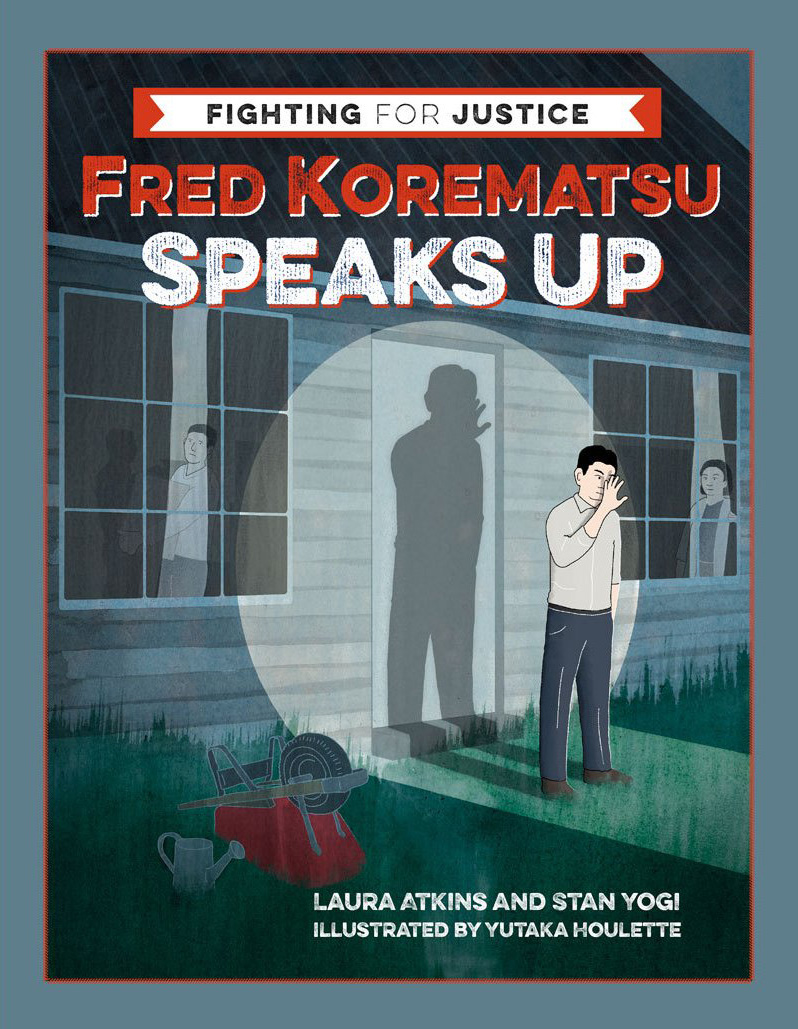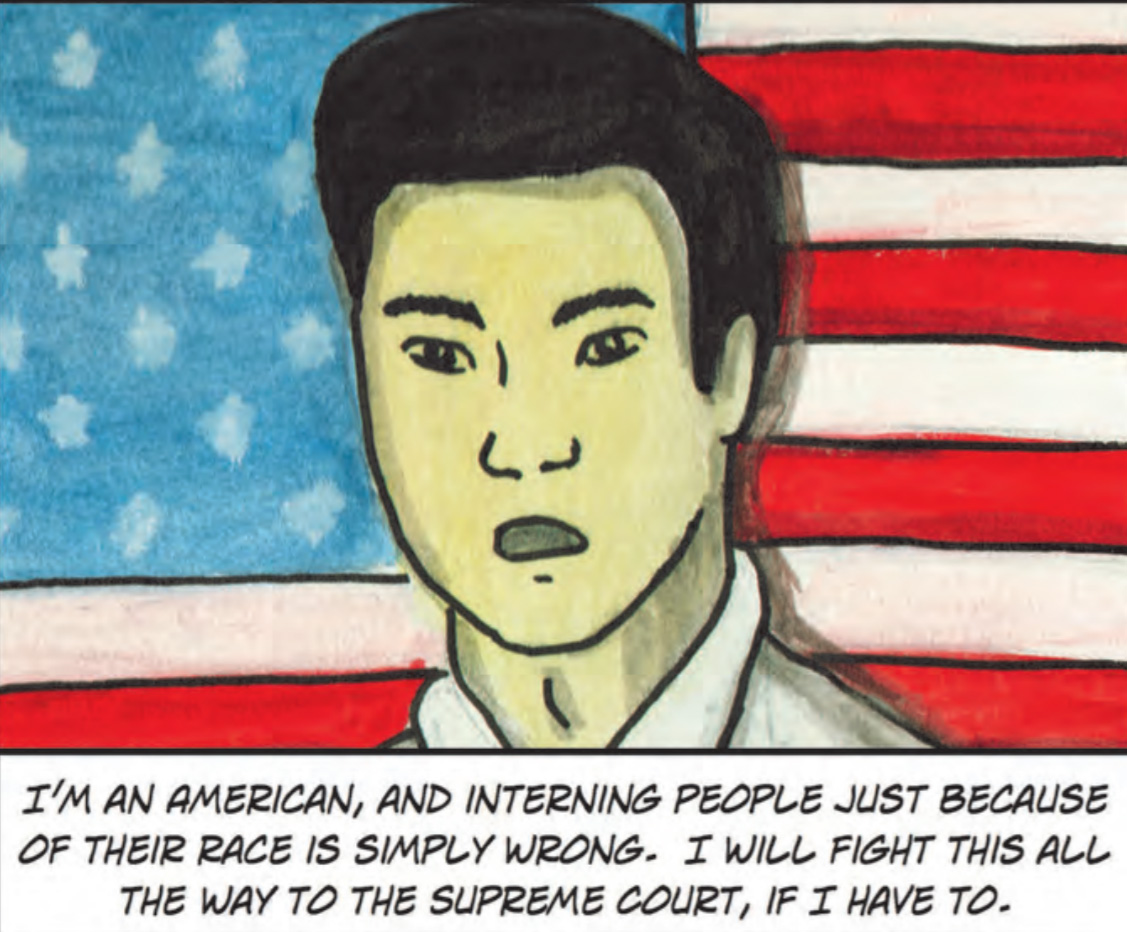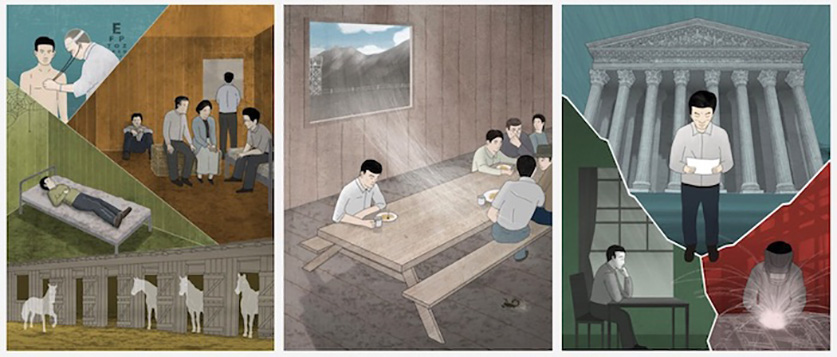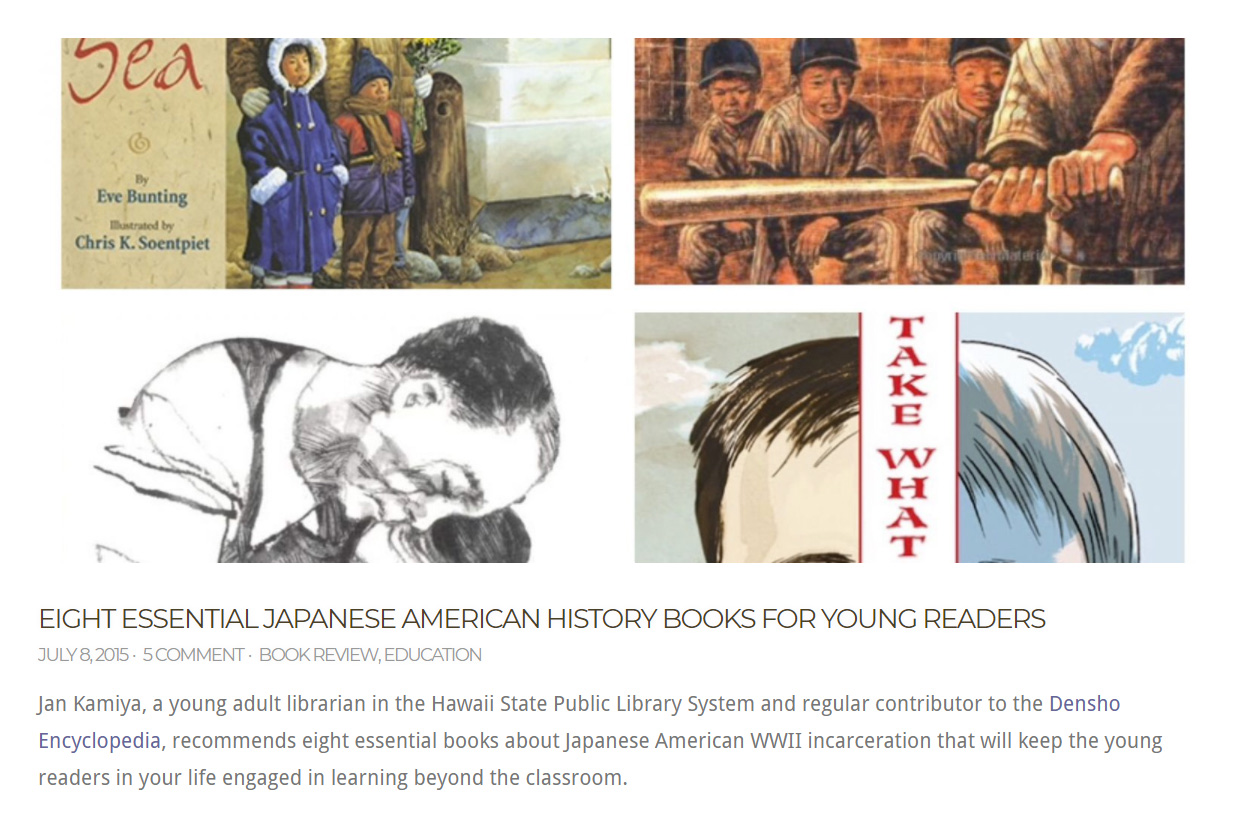January 29, 2018
If you have young readers in your life, you’ve got plenty of options for sharing Korematsu’s story with them since there are no less than six books for children and young adults about the man and his famous legal battle. (And for adult readers, there is a new biography of Korematsu by Lorraine K. Bannai, one of the attorneys who fought his case before the Supreme Court). All of the six books are actually decent, which is more than I can say about many of the children’s young/adult non-fiction books about the Japanese American incarceration. Here’s a quick rundown:
 Three of the books focus more narrowly on Korematsu’s legal case and less on his personal story. Karen Alonso’s Korematsu v. United States: Japanese-American Internment Camps (Enslow Publishers, Inc., 1998) is aimed at middle school audiences while Susan Dudley Gold’s Korematsu v. United States: Japanese-American Internment (Marshall Cavendish Benchmark, 2006) and Karen Latchana Kenney’s Korematsu v. The United States: World War II Japanese-American Internment Camps (ABDO Publishing Co., 2013) are aimed at a high school audience. (As an aside, can the titles of these books be more similar?) All generally do a good job, though all seem too legalistic for their intended audiences. Alonso’s book is highlighted by some nice images from the NCRR photo collection. While Gold’s book has a few historical errors and some annoyingly misspelled Japanese names, it is also does the best job of incorporating the other Japanese American Supreme Court cases.
Three of the books focus more narrowly on Korematsu’s legal case and less on his personal story. Karen Alonso’s Korematsu v. United States: Japanese-American Internment Camps (Enslow Publishers, Inc., 1998) is aimed at middle school audiences while Susan Dudley Gold’s Korematsu v. United States: Japanese-American Internment (Marshall Cavendish Benchmark, 2006) and Karen Latchana Kenney’s Korematsu v. The United States: World War II Japanese-American Internment Camps (ABDO Publishing Co., 2013) are aimed at a high school audience. (As an aside, can the titles of these books be more similar?) All generally do a good job, though all seem too legalistic for their intended audiences. Alonso’s book is highlighted by some nice images from the NCRR photo collection. While Gold’s book has a few historical errors and some annoyingly misspelled Japanese names, it is also does the best job of incorporating the other Japanese American Supreme Court cases.
The other three books, though, are of particular interest and each is in its own way among the best of the non-fiction works on the incarceration.
Steven A. Chin’s When Justice Failed: The Fred Korematsu Story (Steck-Vaughn Company, 1993) was among the earliest children’s books to address the incarceration and is aimed at an elementary school audience. Using the story of how Fred’s daughter Karen first learned of his case in a high school class as a framing device, the book tells Fred’s story in chronological fashion, incorporating the larger story of the incarceration. It ends with the reopening of his case in the 1980s and the ultimate vacating of his convictions. Additional historical details are included in the notes section, though no sources (other than a vague reference to interviews with Korematsu and family members) are cited. Attractive drawings by David Tamura add to the appeal of the book.

One of the most unusual of the non-fiction books is Anupam Chander and Madhavi Sunder’s Fred Korematsu: All American Hero (Carolina Academic Press, 2011). A comic book illustrated by Angelia Loi, the book came out of a drive to name an elementary school in Davis, California, after Korematsu. UC Davis law professors Chander and Suder—a married couple who lived in Davis with their two children—thought a comic book about him would be a good vehicle for kids and the community to learn Korematsu’s story. The authors introduce the story through a young Muslim American girl who is picked on at school after the 9/11 attacks who. She is then comforted by a Nisei neighbor who tells of her similar experience and of Korematsu. Though this device is a bit clumsy and introduces some temporal inconsistencies, the comic is a brisk and worthwhile read, augmented by Loi’s colorful drawings. You can download a PDF version of the comic book here.
Most recently, there is Laura Atkins and Stan Yogi’s Fred Korematsu Speaks Up (Heyday Books, 2017), which is aimed at elementary and middle school audiences. (Disclosure: Stan is an old friend and a literary scholar who contributed to the Densho Encyclopedia.) The authors use an unusual combination of free verse to tell Korematsu’s personal story, juxtaposed with sections on the broader context. One of the most attractive children’s books, it incorporates illustrations by Yutaka Houlette with a variety of photographs, art pieces, documents, and cartoons. Written in a lively and informative manner, thoroughly researched and nice to look it, this is one of the two or three best children’s books on the incarceration.
Oddly, there are no children’s books on any of the other Japanese Americans who challenged the exclusion or incarceration at the Supreme Court level and whose names are inextricably linked to Korematsu: Gordon Hirabayashi, Minoru Yasui, and Mitsuye Endo. It would be great to see such books one day.
—
By Brian Niiya, Densho Content Director
[Header image: Illustrations from Fred Korematsu Speaks Up by Laura Atkins and Stan Yogi, illustrated by Yutakia Houlette.]
For more books on Japanese American incarceration history for young readers, check out a young adult librarian’s recommendations here:

